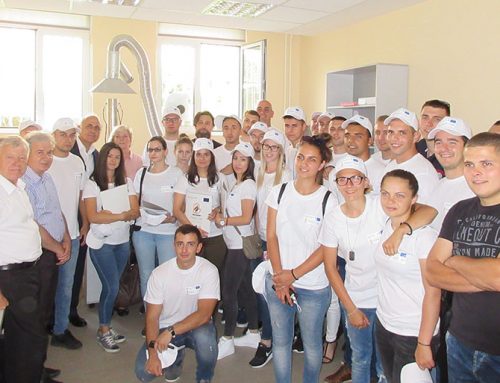The number of cases of rabies in wild animals Serbia fell in 2011 by 80 percent compared to 2009 and in 2012 only 13 cases of infection were registered as a result of assistance from the European Union.
Despite the incredible accomplishments of modern medicine, rabid fox bites meant certain death to man. The first recorded case of healing dates back to 6 July 1885, when the famous scientist Louis Pasteur with an unregistered substance vaccinated his nine-year old son Joseph who had been bitten by a mad dog. Joseph lived to the age of 64, but it was only in 1939 that a rabies vaccine was created, which is still used today. The vaccine is called “Flury” after the girl who died on 29 January 1939 in the U.S. State of Georgia, of bites from rabid animals, and whose blood taken as the basis for the vaccine.
In the period 2000 – 2010 every year some 200 cases of rabies in animals were registered. More than 85 percent of the sick animals were wild, and more than 95 percent of the affected animals were foxes. Rabid foxes are a threat to spreading rabies among domestic animals and humans since rabies causes them to change behavior by approaching people and domestic animals and biting them.
As in other European countries and worldwide, for several decades efforts have been made towards the prevention and control of rabies in Serbia: preventive vaccination in dogs and cats, dog tagging, registration of dogs and cats in the Central Animal Registry, recording rabies vaccinations and animal owners, issuing passports to dogs and cats. However, the systematic vaccination of wild animals in Serbia has not been done, although a pilot vaccination was conducted in 2002 in the wider area of Subotica, reducing the number of infected animals in the area. This method was first applied by Switzerland in 1980, followed by France, Germany and other European countries, and since the 1990s by the United States and Canada as well.
In the Western Balkans region, including Serbia, rabies and classical swine fever (CSF) is still present. The policy of vaccination against CSF does not comply with EU legislation. The program for control and eradication of this disease and rabies in wildlife has been funded from the budget of Serbia for decades, but it was insufficient to eradicate rabies.
In order to assist the countries of the Western Balkans, the European Commission’s Directorate General for Health and Consumers (DG SANCO) has launched a multi-year program for the control and eradication of rabies and CSF in the Western Balkans. The most important part of the program is the national immunization of foxes. IPA pre-accession funds financed a five-year program (2008 – 2013) in Serbia in the amount of 10 million euros. The program “Support to the control and eradication of classical swine fever and rabies in Serbia” was implemented in cooperation with the Ministry of Agriculture, Forestry and Water Management – Veterinary Directorate. The aim of the program was the complete eradication of rabies and CSF in Serbia.
Donation to veterinary institutes
The program involved three veterinary institutes specialized in the efficiency control of vaccination of wildlife against rabies in Kraljevo, Novi Sad and Belgrade. “With this donation, we created a laboratory for rabies, which is modernly equipped and we have participated in the training of employees. This equipment is important for the better quality of work of the Institute and the work on the eradication of rabies,” said Zoran Debeljak, Director of the Specialized Veterinary Institute “Kraljevo”.
With the EU donations, centers for highly dangerous infectious diseases of animals in all veterinary institutes in Kraljevo, Belgrade, Novi Sad and Nis have been equipped. The centers serve for rapid response in case some infectious disease appears in the territory of Serbia. “With a program of continuous training, the readiness level was raised so as to be able to react at most within six hours from the time of receiving the order,” said Debeljak.
According to Slobodan Stanojevic, technical director of the Institute of Veterinary Medicine of Serbia in Belgrade, the Institute has received substantial equipment and supplies through the EU-funded program. “Equipping the Institute is significant for several reasons. It is a national reference laboratory and with the additional equipment we have significantly increased the diagnostic capabilities of our laboratories and increased the level of safety in our laboratories. Now we can implement diagnostic procedures more quickly and efficiently, we have achieved greater confidence in the accuracy of test results, we have introduced novelties in research and we document the results and examination flow with more ease,” said Stanojevic.
Vaccination of foxes
The European Union funded a multi-year programme to improve the health of animals in Serbia according to the standards of EU and other countries of the Western Balkans, which will enhance the export of livestock and agricultural products. The long-term goal is the eradication of animal diseases which will improve public health, but will also have a positive impact on the economy, especially the pork producers in Serbia, who will increase export opportunities.
Serbia is the first in the region to conduct oral vaccination (vaccination ingestion) of foxes and other wild animals against rabies since autumn 2010 (in the spring and autumn of each year). The aim of the vaccination is the complete eradication of rabies in Serbia. The EU funded the purchase of equipment and systems for disease surveillance. In 2009 (the last year prior to oral vaccination) 185 cases of rabies in wild animals were recorded, while in 2011 there were only 46 cases, representing a decrease of 80 percent! Compared to 2009, the reduction in 2012 was over 90 percent!
The distribution of oral vaccine is performed manually or from the air (by airplanes or helicopters). From the air, with the help of a special device, one by one vaccine is ejected (in the form of a hard cookie, with an enticing aroma and taste for foxes, each containing a capsule with vaccine which the fox ingests into the organism). These vaccines are dispersed every 250m depending on the estimated number of foxes, and the discharge is recorded electronically by special software using the GPS system.
From the beginning of 2012 till March 2013, there have been only 13 cases of infection recorded in Serbia. This is the result of oral vaccination of wildlife and significant EU assistance to Serbia in this area.




